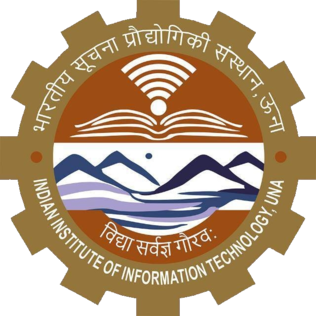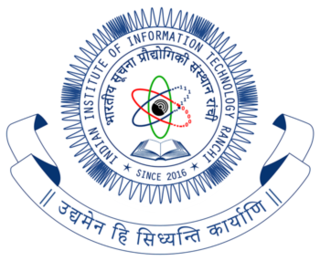
In computing, the Executable and Linkable Format, is a common standard file format for executable files, object code, shared libraries, and core dumps. First published in the specification for the application binary interface (ABI) of the Unix operating system version named System V Release 4 (SVR4), and later in the Tool Interface Standard, it was quickly accepted among different vendors of Unix systems. In 1999, it was chosen as the standard binary file format for Unix and Unix-like systems on x86 processors by the 86open project.

In electronics and computer science, a reduced instruction set computer (RISC) is a computer architecture designed to simplify the individual instructions given to the computer to accomplish tasks. Compared to the instructions given to a complex instruction set computer (CISC), a RISC computer might require more instructions in order to accomplish a task because the individual instructions are written in simpler code. The goal is to offset the need to process more instructions by increasing the speed of each instruction, in particular by implementing an instruction pipeline, which may be simpler to achieve given simpler instructions.

A Commentary on the Sixth Edition UNIX Operating System by John Lions is a highly influential 1976 publication containing analytical commentary on the source code of the 6th Edition Unix computer operating system "resident nucleus" software, plus copy formatted and indexed by Lions, of said source code obtained from the authors at AT&T Bell Labs. It is also commonly referred to as the Lions Book.
In computing, binary translation is a form of binary recompilation where sequences of instructions are translated from a source instruction set to the target instruction set. In some cases such as instruction set simulation, the target instruction set may be the same as the source instruction set, providing testing and debugging features such as instruction trace, conditional breakpoints and hot spot detection.

Inferno is a distributed operating system started at Bell Labs and now developed and maintained by Vita Nuova Holdings as free software under the MIT License. Inferno was based on the experience gained with Plan 9 from Bell Labs, and the further research of Bell Labs into operating systems, languages, on-the-fly compilers, graphics, security, networking and portability. The name of the operating system, many of its associated programs, and that of the current company, were inspired by Dante Alighieri's Divine Comedy. In Italian, Inferno means "hell", of which there are nine circles in Dante's Divine Comedy.

Computer science and engineering (CSE) is an academic program at many universities which comprises approaches of computer science and computer engineering. There is no clear division in computing between science and engineering, just like in the field of materials science and engineering. However, some classes are historically more related to computer science, and other to computer engineering. CSE is also a term often used in Europe to translate the name of technical or engineering informatics academic programs. It is offered in both undergraduate as well postgraduate with specializations.
Not Another Completely Heuristic Operating System, or Nachos, is instructional software for teaching undergraduate, and potentially graduate level operating systems courses. It was developed at the University of California, Berkeley, designed by Thomas Anderson, and is used by numerous schools around the world.

John Lions was an Australian computer scientist. He is best known as the author of Lions' Commentary on UNIX 6th Edition, with Source Code, commonly known as the Lions Book.
W^X is a security feature in operating systems and virtual machines. It is a memory protection policy whereby every page in a process's or kernel's address space may be either writable or executable, but not both. Without such protection, a program can write CPU instructions in an area of memory intended for data and then run those instructions. This can be dangerous if the writer of the memory is malicious. W^X is the Unix-like terminology for a strict use of the general concept of executable space protection, controlled via the mprotect system call.
XINU Is Not Unix, is an operating system for embedded systems, originally developed by Douglas Comer for educational use at Purdue University in the 1980s. The name is both recursive, and is Unix spelled backwards. It has been ported to many hardware platforms, including the DEC PDP-11 and VAX systems, Motorola 68k, Intel x86, PowerPC G3, MIPS, ARM architecture and AVR (atmega328p/Arduino). Xinu was also used for some models of Lexmark printers.

Sixth Edition Unix, also called Version 6 Unix or just V6, was the first version of the Unix operating system to see wide release outside Bell Labs. It was released in May 1975 and, like its direct predecessor, targeted the DEC PDP-11 family of minicomputers. It was superseded by Version 7 Unix in 1978/1979, although V6 systems remained in regular operation until at least 1985.
Pintos is computer software, a simple instructional operating system framework for the x86 instruction set architecture. It supports kernel threads, loading and running user programs, and a file system, but it implements all of these in a very simple way.
India has the largest numbers of engineers as well as the largest number of engineering education institutes and infrastructure in the world. As of 2021, India annually produces 1.5 million engineering graduates. India's technical education infrastructure includes 2500 engineering colleges, 1400 polytechnics and 200 schools of planning and architecture.

Indian Institute of Information Technology, Kalyani is an Indian Institute of Information Technology located at Kalyani, West Bengal and is one of the 31 IIIT'S set up by government of India. The institute was set up by the Government of India Ministry of Human Resource Development, Government of West Bengal and industry partners using the not-for-profit Public Private Partnership (N-PPP) model, at a ratio of 50:35:15 respectively between three parties. Admission to IIIT Kalyani is done on the basis of the marks obtained in JEE Main. IIIT Kalyani has been attributed the status of Institute of National Importance (INI) by the cabinet in March 2017 under the IIIT Act. Virendra Kumar Tewari was the Mentor-Director for IIIT, Kalyani and IIT Kharagpur is the mentor institute.
RISC-V is an open standard instruction set architecture (ISA) based on established reduced instruction set computer (RISC) principles. Unlike most other ISA designs, RISC-V is provided under royalty-free open-source licenses. Many companies are offering or have announced RISC-V hardware; open source operating systems with RISC-V support are available, and the instruction set is supported in several popular software toolchains.

Indian Institute of Information Technology, Manipur (IIITM) is one among the prestigious Indian Institutes of Information Technology, a group of 25 Interdisciplinary Technical Universities of higher education started by the Government of India, focused on Information Technology. It is an "Institute of National Importance", declared by an act of parliament.

Indian Institute of Technology Tirupati is an autonomous engineering and technology education institute located in Tirupati, Andhra Pradesh. Initially mentored by IIT Madras, now IIT Tirupati, the fastest growing 3rd generation IIT is located in Yerpedu, Tirupati, and has a size of 539 acres, including a proposed research park. The Foundation stone for IIT Tirupati was laid by the Union Minister Smriti Irani and the then Union Minister and former Vice President of India M.Venkaiah Naidu and the then chief minister of Andhra Pradesh N. Chandrababu Naidu.

Indian Institute of Information Technology Una is one of the Indian Institutes of Information Technology located at Vill. Saloh, Teh. Haroli, Distt. Una Himachal Pradesh-177209, Himachal Pradesh.. Established in 2014, it was recognized as an Institute of National Importance. IIIT Una is a joint venture of the Ministry of Human Resource Development, Government of India, the Govt. of Himachal Pradesh, with Industries in Public-Private Partnership model. The industries are H.P. Power Corporation and H.P. Power Transmission Corporation.

Indian Institute of Information Technology, Ranchi, is one of the Indian Institutes of Information Technology, a group of 25 Interdisciplinary Technical Universities of higher education started by Government of India, focused on Information Technology.

SHAKTI is an open-source initiative by the Reconfigurable Intelligent Systems Engineering (RISE) group at Indian Institute of Technology, Madras to develop the first indigenous Indian industrial-grade processor. The aim of SHAKTI initiative includes building an opensource production-grade processor, complete system on chips (SoCs), development boards and SHAKTI based software platform. The primary focus of the team is architecture research to develop SoCs, which is competitive with commercial offerings in the market concerning area, power and performance. All the source codes for SHAKTI are open-sourced under the Modified BSD License. The project was funded by the Ministry of Electronics and Information Technology (MeITY), Government of India.













